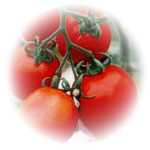| WEB RESOURCES |
DETAILS |
Biotechnology Timeline
Source: Biotechnology Industry Organization |
A look back at 10,000 years of biotechnology
- To scroll, move mouse left or right
- To stop the scrolling, move your mouse in the opposite direction a little and stop abruptly
If you have difficulties with the scrolling, here is a non-scrolling biotechnology timeline from the Department of Nutrition and Food Science, Texas A&M University.
|
The Facts of Life:
An Introduction to Genetics for Grades 5-9
Source: HOPES - Huntington's Outreach Project for Education at Stanford |
This introduction (inclusive of Mendel's laws of heredity) is used as a foundation and starting point for learning about Huntington's Disease. |
Pass the genes, please!
Source: Canadian Museum of Nature |
A game to help you understand dominant and recessive genes. Your task is to choose combinations of genes from both parents (Mom and Dad Melonheads) to help create the offspring they want. |
Guess What's Coming to Dinner?
Source: Nova Online and Frontline |
Explore a table full of genetically modified foods and find out how biotechnology is changing what we eat.
|
Introducing a Gene into a Cell:
Recombinant DNA Technology
Source: BioTeach |
A movie on how transgenic plants are made
Plants that develop from a cell into which new DNA has been introduced are called transgenic plants. In 1994, the first biotech tomato was marketed. How are new genes introduced into a cell?
In most cases, DNA cannot be transferred directly from its original organism (or donor), to the recipient organism (or host). The DNA segment has to be spliced into a plasmid (a small circular molecule of DNA) of harmless bacteria, and then the plasmid is inserted into the host cells. The bacteria will divide, replicating the donor DNA in large quantities and carrying the donor DNA to the host ... thus permanently changes the genetic makeup of that host and all its descendants.
|
How to Make Transgenic Plants
Source: Colorado State University |
An overview on how transgenic plants are made
For more details, click on the image at each step of the Crop Genetic Engineering Cycle. |
DNA shot directly into plant cells
Source: Canadian Museum of Nature |
Other than Recombinant DNA (or gene splicing), there is another method of introducing a gene into a cell ... the DNA is shot directly into plant cells.
The DNA that encodes the genetic information for the desirable trait must be (1) isolated then (2) coated onto microscopic metal particles and loaded into a so-called "gene gun" and (3) fired as projectiles at callus (i.e., undifferentiated plant cells) growing in the laboratory. The undifferentiated callus can be triggered by hormones to develop into a whole plant.
(4) The DNA migrates into the cell's nucleus, where the genetic material is permanently integrated into the chromosomes. (5) The modified plant cells are identified and placed into a cell culture to multiply, differentiate and grow. As the cells reproduce, the new gene is reproduced along with them. (6) Finally, the plantlets are transferred from the laboratory culture to soil where they grow like normal plants, except now they carry a gene that can give them a new, beneficial trait. |
Gene Gun
Source: University of Nebraska |
An animation showing how the gene gun (also called particle acceleration or microprojectile bombardment) is used to introduce extra DNA into the nucleus of plant cells and produce trangenic plants. |
Risks and Concerns of Transgenic Crops
Source: Colorado State University |
The issues surrounding objections to transgenic crops can be broadly grouped into concerns about (1) damage to human health (2) damage to the natural environment (3) disruption of current practices of farming and food production in developed countries and (4) disruption of traditional practices and economies in less developed countries. |
Featured Report:
Genetically Modified Crops and Foods
Source: American Medical Association |
Full-text report on the technology used to produce transgenic crops, the current regulatory framework for managing them, possible human health effects and potential environmental impact.
|
